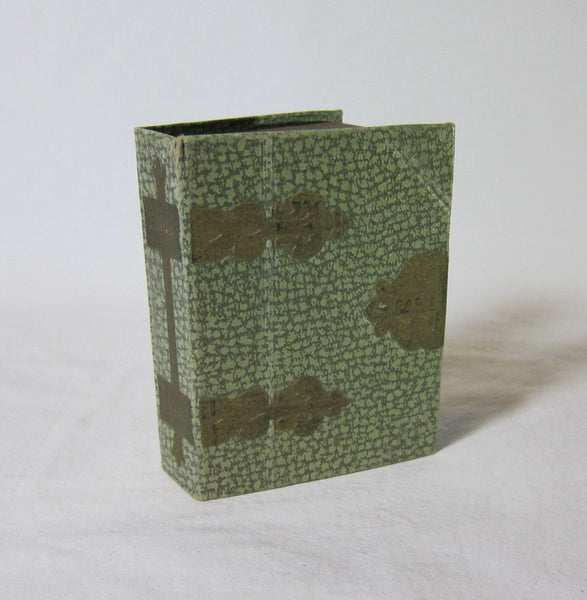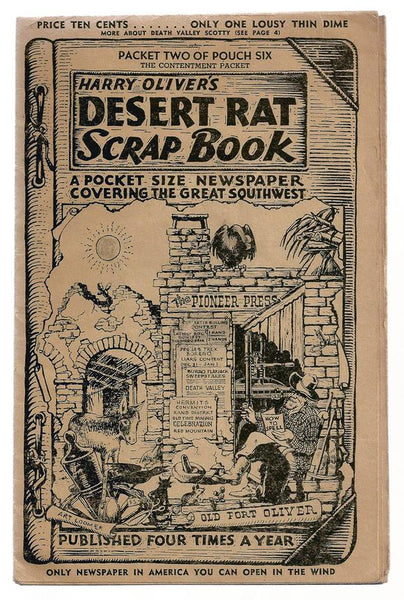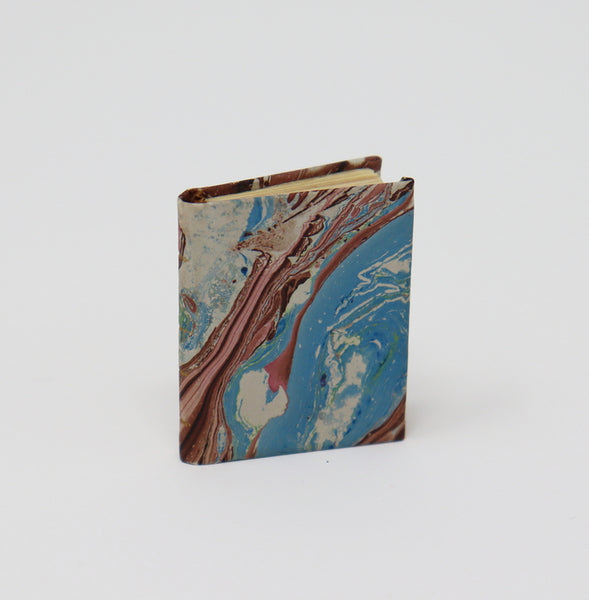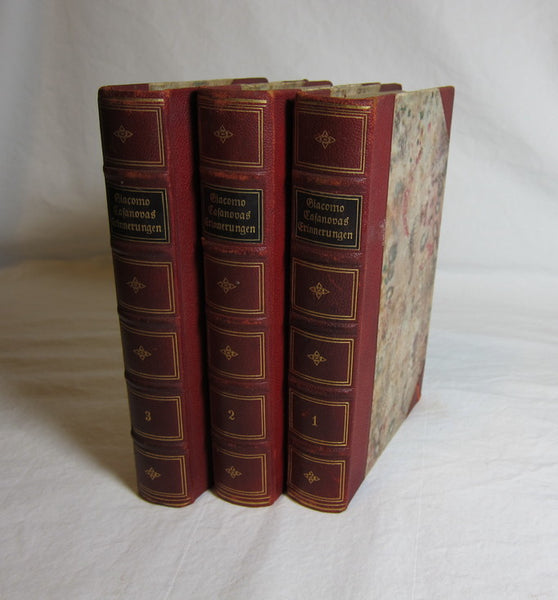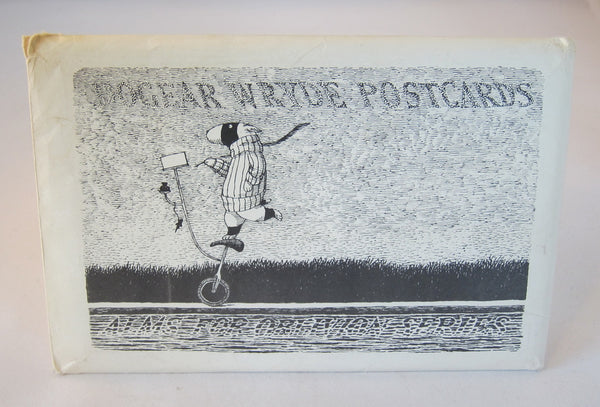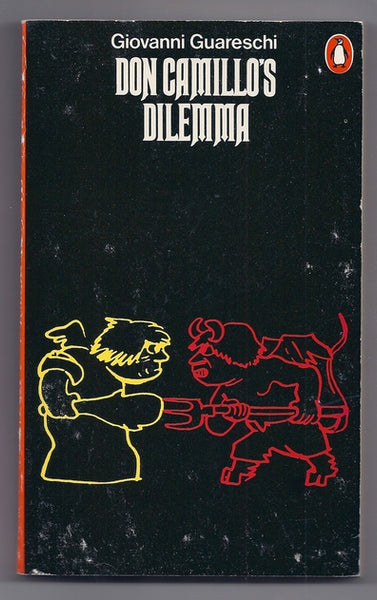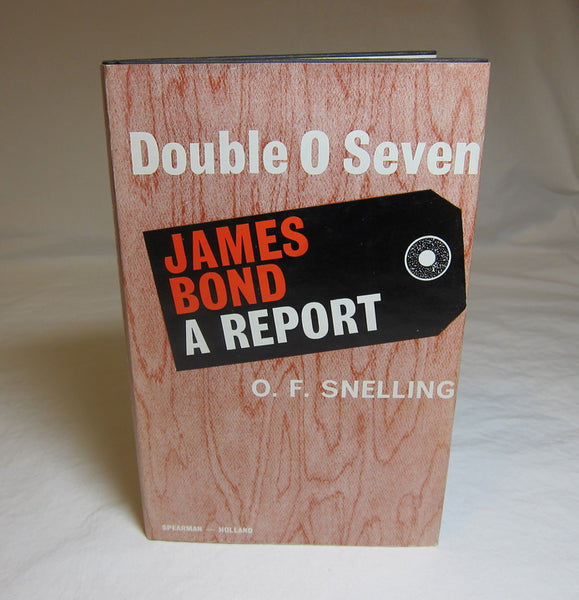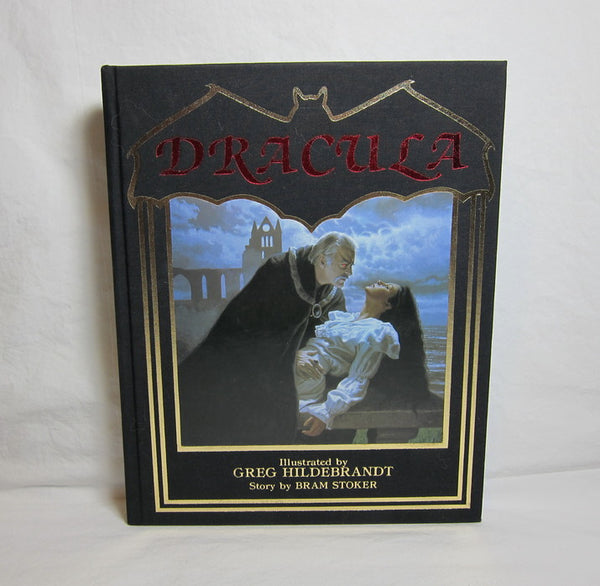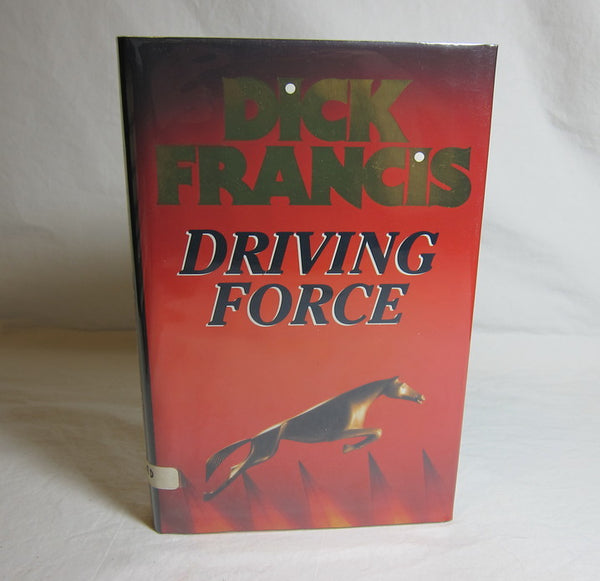Products
D'Ambrosio: The Book as an Art Form
Gualala, CA: North Light Gallery, 1983. Approximately 17 x 21". LIMITED EDITION of 100 copies, this being #60. Broadside is a serigraph image with text, signed and numbered in pencil by the artist, in fine condition.
Joseph D'Ambrosio (1934 -2009) was an American artist and binder. He left a career in engineering to pursue a new career in making artist’s books. He wrote, set type, printed designs, did the artwork and the binding. His books were considered works of art and were signed and numbered similar to limited edition fine art prints. D’Ambrosio also produced many broadside posters on fine papers that were issued in conjunction with his book projects and for special events. This broadside from 1983 is a promotional work for his book of the same title.
Decorative Box in Book Form
(Paris): n.p., 1934. Approximately 3 1/4 x 4 1/2". Green textured paper with gilt decorations resembling latches on front cover, more faux brass decorations and title on spine, all edges gilt and molded to resemble book pages showing some wear and pencil marks, interior nicely lined in gilt paper. A very good copy, unique.
Desert Rat Scrap Book, Packet Two of Pouch Six
Thousand Palms, CA: Harry Oliver, [1953]. First edition; 17 x 22" (folded double three times); heavy cream-colored stock; profusely illustrated with cover art by Art Loomer; minor puncture to lower fold-line and a small rubbed spot to front cover, else minor wear to edges; overall very good to near fine condition.
The "Desert Rat Scrap Book" (or DSRB) was a (somewhat irregularly published) quarterly Southwestern humor periodical created by art director, humorist, and artist Harry Oliver. Boasting to be "the smallest newspaper in the world" and the "only newspaper in America you can open in the wind," the current Packet Two, or The Contentment Packet, included the second installment of western-novels writer Dane Coolidge's "Death Valley Scotty, Prospector and Showman," Don Blanding's "The Desert," and the hilarious article "Mule Decides to Quit Army," etc. Considered by many to be the precursor to the zine culture - few copies of Oliver's journal have survived.
Detti e Motti Triestini
Milan, Italy: Legatoria Conti Borbone dei Fratelli Marchesi, 1989. (32) pp. 1 1/4 x 1 3/4". Marbled paper over boards, 7 illustrations, text in Italian, in fine condition.
The title translates to Triestine sayings and mottos. A lovely well-made miniature book. Since 1873, bookbinding Conti Borbone has been a reference point for luxury objects and bindings.
Die Erinnerungen des Giacomo Casanova. Vollständig übertragen von Heinrich Conrad. Mit einer Einleitung von Friedrich Freska. (The Memories of Giacomo Casanova)
Berlin: Benjamin Harz, [1911]. Approximately 5 x 7 1/2". Volumes 1-3 only (volumes 4-6 missing). Marbled boards with half leather binding, top edge gilt, 5 bands and title on spine, fine gold embossing, illustrated title page and frontispiece,some rubbing to edges and slight rip in leather on volume 1, in very good + condition.
The memories of Giacomo Casanova (1725 - 1798). Completely translated by Heinrich Conrad. With an introduction by Friedrich Freska. Conrad attaches great importance to emphasizing the completeness of his transmission, except for the two chapters that Casanova, for some unexplained reason, has removed himself.
Dogear Wryde Postcards: Alms for Oblivion
n.p.: n.p., 1978. Sixteen postcards in near fine condition, enclosed in a white envelope with black pictorial stamping, creased with slight tears, in very good condition. (Toledano A68).
The recto of the postcards is a black and white Gorey illustration. The verso of each postcard has the title of the series and the description of each illustration. "Dogear Wryde" is an anagram for Edward Gorey.
Don Camillo's Dilemma
Penguin 1976 printing. Book is tight and square. Spine is flat, shiny, and only slightly creased. Cover is bright, with some shelf wear. Interior is clean, no bookstore stamps or writing, in very good condition. Age toning is present as is common in books of this vintage.
Double O Seven. James Bond. A Report.
London: Neville Spearman, Holland Press, 1964. 160 pp. Approx. 5 1/2 x 8 1/2". Dust Jacket in fine condition. Black cloth over boards with crisp and bright silver lettering lettering on spine, SIGNED and INSCRIBED on the front free endpaper to Raymond Toole-Stott (an MBE, a well-known collector of circus books and bibliographer, as well as a personal friend of Somerset Maugham), very minor foxing to top edges, otherwise in near-fine condition.
Oswald Frederick Snelling (1916 - 2001) was a British author, best known for this book, the only analysis of the James Bond series that was personally authorized by Ian Fleming. Snelling met Fleming while working at Sotheby's Rare Book Department. Selling over a million copies, Double O Seven was published in several languages and was published in the American market in 1965.
Dracula
Parsippany, NJ: Unicorn Publishing House, 1985. 8 1/4 x 10 1/4". Black cloth over boards with red and gilt stamped lettering and illustrated color cover plate, illustrated by Greg Hildebrandt, entry form laid in for voting on future titles for the publisher, no dust jacket as issued, in fine condition.
Set from the original 1897 edition from the personal cellection of Germaine Hildebrandt, this book is the classic creation of the myth of Dracula. Beautifully illustrated throughout with many black and white and full-color illustrations.
Driving Force
London: Michael Joseph, 1992. 277 pp. Approximately 6 1/4 x 9 1/4". 1st English Edition. Illustrated dust jacket in fine condition; Black cloth over boards, gilt title on spine, signed by the author on the half-title page, in fine condition.
Born Richard Stanley Francis (1920 - 2010), Dick Francis was a British crime writer whose novels were mostly centered on horse racing in England (he was a former steeplechase jockey himself). This book is Dick Francis' 31st book, with jockey, Freddie Croft, trying to deal with a conspiracy involving the seedy underside of horse-racing.


